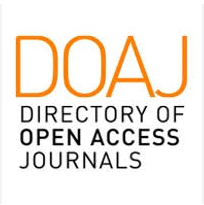Impact of Socio-Economic Factors on Undernourishment in Central Asia
Abstract
The Global Hunger Index reports a troubling rise in the global number of undernourished people, increasing from 572 million in 2017 to 735 million in 2023, highlighting persistent global challenges. In Central Asia, undernourishment poses a serious threat to public health and impedes both economic and social progress for millions. This study emphasizes the critical roles of political stability and remittances as primary determinants influencing undernourishment in the region. Utilizing a fixed-effects panel data model, we analyze the impact of these key factors, alongside other economic and social indicators, on food security. Our findings indicate that higher remittance inflows are inversely related to undernourishment, suggesting that increased household income from remittances greatly enhances food access and security. Furthermore, the analysis highlights that political stability plays a crucial role in mitigating undernourishment, with more stable governance correlating with lower rates of food insecurity. These insights emphasize the necessity for targeted policies that foster political stability and encourage remittance flows while ensuring inclusive food access and local production.
References
Abdullah, Qingshi, W., & Akbar, M. (2022). A Spatial Panel Analysis of Food Security and Political Risk in Asian Countries. Social Indicators Research, 161(1), 345–378. https://doi.org/10.1007/s11205-021-02821-5
Adeyeye, S. A. O., Adebayo-Oyetoro, A. O., & Tiamiyu, H. K. (2017). Poverty and malnutrition in Africa: a conceptual analysis. In Nutrition and Food Science (Vol. 47, Issue 6, pp. 754–764). Emerald Group Publishing Ltd. https://doi.org/10.1108/NFS-02-2017-0027
Cassimon, D., Fadare, O., & Mavrotas, G. (2022). The impact of governance and capital flows on food and nutrition security and undernourishment. Further evidence from Sub-Saharan Africa.
Duisenbekova, A., Kulisz, M., Danilowska, A., Gola, A., & Ryspekova, M. (2024). Predicting Food Consumption to Reduce the Risk of Food Insecurity in Kazakhstan. Economies, 12(1). https://doi.org/10.3390/economies12010011
Eini-Zinab, H., Edalati, S., Sobhani, S. R., Kezabi, M. F., & Hosseini, S. (2020). Undernourishment trends and determinants: an ecological study of 76 countries. Public Health, 186, 230–239. https://doi.org/10.1016/j.puhe.2020.07.013
Erokhin, V., Diao, L., Gao, T., Andrei, J. V., Ivolga, A., & Zong, Y. (2021). The Supply of Calories, Proteins, and Fats in Low-Income Countries: A Four-Decade Retrospective Study. International Journal of Environmental Research and Public Health 2021, Vol. 18, Page 7356, 18(14), 7356. https://doi.org/10.3390/IJERPH18147356
FAO. (2023a). Europe and Central Asia - Regional Overview of Food Security and Nutrition 2023. In Europe and Central Asia - Regional Overview of Food Security and Nutrition 2023. FAO. https://doi.org/10.4060/cc8608en
FAO. (2023b). The State of Food Security and Nutrition in the World 2023. In The State of Food Security and Nutrition in the World 2023. FAO; IFAD; UNICEF; WFP; WHO; https://doi.org/10.4060/cc3017en
Gujarati, D. (2004). Basic Econometrics (4th edition). The McGraw-Hill Companies.
Hill, R. Carter., Griffiths, W. E., & Lim, G. C. (Guay C. ). (2011). Principles of econometrics. Wiley.
Islam, Md. S. (2021). Influence of Socioeconomic Determinants on Undernourishment in South Asia: A Panel Cointegration Analysis. Health Scope, 10(2). https://doi.org/10.5812/jhealthscope.109082
Junussova, M., Mogilevskii, R., Maulsharif, M., Macchioni Giaquinto, A., Mane, E., Enikeeva, Z., Ianova, M., Niiazaliev, B., & Chalbasova, S. (2024). Gendered impact of the COVID-19 pandemic on food security, agricultural production, income and family relations in rural areas of Kyrgyzstan, Tajikistan and Uzbekistan - Working Paper, 76. https://doi.org/10.4060/cd0401en
Krawinkel, M. B. (2012). Overcoming undernutrition with local resources in Africa, Asia and Latin America. Journal of the Science of Food and Agriculture, 92(14), 2757–2759. https://doi.org/10.1002/JSFA.5822
Mulyo, J. H., Prasada, I. Y., & Nugroho, A. D. (2023). Impact of political and security stability on food security in developing countries: Case of Africa, Asia, Latin America and the Caribbean. Agricultural Economics (Czech Republic), 69(9), 375–384. https://doi.org/10.17221/142/2023-AGRICECON
Murodova, S. (2018). Impact of Remittances and International Migration on Poverty in Central Asia: The cases of the Kyrgyz Republic, Tajikistan, and Uzbekistan. Journal of Applied Economics and Business Research JAEBR, 38–56.
Nugroho, A. D., Bhagat, P. R., Magda, R., & Lakner, Z. (2021). The impacts of economic globalization on agricultural value added in developing countries. PLoS ONE, 16(11 November). https://doi.org/10.1371/journal.pone.0260043
Nugroho, A. D., Cubillos T., J. P., Bopushev, S. T., Bozsik, N., Fehér, I., & Lakner, Z. (2022). Effects of Corruption Control on the Number of Undernourished People in Developing Countries. Foods, 11(7). https://doi.org/10.3390/foods11070924
Poghosyan, T. (2020). Remittances in Russia and Caucasus and Central Asia: The Gravity Model.
Rabbi, M. F., Oláh, J., Popp, J., Máté, D., & Kovács, S. (2021). Food security and the covid-19 crisis from a consumer buying behaviour perspective—the case of bangladesh. Foods, 10(12). https://doi.org/10.3390/foods10123073
Smith, M. D., Kassa, W., & Winters, P. (2017). Assessing food insecurity in Latin America and the Caribbean using FAO’s Food Insecurity Experience Scale. Food Policy, 71, 48–61. https://doi.org/10.1016/J.FOODPOL.2017.07.005
Soriano, B., & Garrido, A. (2016). How important is economic growth for reducing undernourishment in developing countries? Food Policy, 63, 87–101. https://doi.org/10.1016/j.foodpol.2016.07.004
UN. (2023). The-Sustainable-Development-Goals-Report-2023.
Von Grebmer, K., Bernstein, J., Wiemers, M., Reiner, L., Bachmeier, M., Hanano, A., Chéilleachair, R. N., Foley, C., Sheehan, T., Gitter, S., Larocque, G., Guest, H. F., Geza, W., & Ndlovu, M. (2023). GLOBAL HUNGER INDEX THE POWER OF YOUTH IN SHAPING FOOD SYSTEMS A Peer-Reviewed Publication. www.globalhungerindex.org
World Bank/KNOMAD. (2024). Remittances Slowed in 2023, Expected to Grow Faster in 2024. Migration and Development Brief 40.
Zakaria, M., Junyang, X., & Fida, B. A. (2016). Trade Openness, Malnourishment and Income Inequality in South Asia.


























